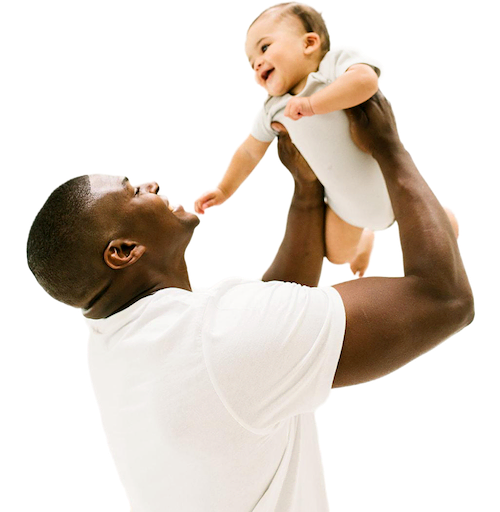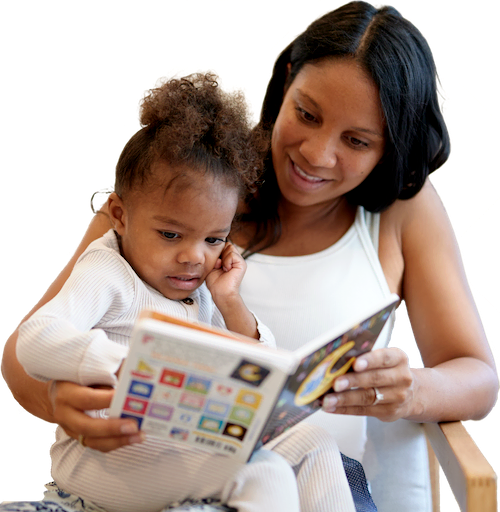Are you wondering when your baby will learn to fall asleep on their own or how to teach your baby to fall asleep independently? Let's talk about it.
Taking Cara Babies Classes
stars ( reviews)
If you’re looking for a step-by-step plan to help your little one learn to fall asleep independently, each of my classes will give you just that. Choose your child’s age to get started:
Why would I want my baby to fall asleep on their own?anchor
In short: when a baby falls asleep without extra help, we see longer stretches of sleep at night, better naps, and fewer early morning wakings.(1)
On the other hand, babies who are held, rocked, or fed to sleep have more night wakings, need more help falling back to sleep, and take shorter naps.(1)
Can babies learn to fall asleep on their own without sleep training?anchor
Yes! That’s exactly what my First Five Months Bundle teaches! For some babies, the gentle techniques in that class are enough for them to learn to fall asleep independently. Other babies need more time and help learning to fall asleep on their own. For babies over 5 months, that’s where sleep training comes in. Sleep training is simply a way to intentionally teach your baby or toddler to independently fall asleep and go back to sleep on their own throughout the night.
When can I teach my baby to fall asleep on their own?anchor
You can start practicing independent sleep right after your baby is born. It’s never too soon or too late to start working on falling asleep independently.
At what age should a child know how to fall asleep on their own?anchor
It depends. Falling asleep independently is not a developmental “milestone.” There’s no specific age that would indicate a child is ahead or behind in this skill. Some babies are able to consistently fall asleep on their own as newborns, while others may not until much later. For many babies and toddlers, falling asleep on their own is a skill that takes time and practice.
If rocking or feeding to sleep is working for you and your child, you don’t have to change anything. But, if you start to see night wakings, early morning wakings, or short naps, know that helping your little one learn to fall asleep on their own can be a game changer.
Why do some babies struggle to fall asleep on their own?anchor
The most common reason a baby or toddler struggles to fall asleep on their own is simply because they haven’t yet learned the skill. As long as your baby or toddler is healthy, falling asleep independently is a skill that can be learned with consistent practice and healthy sleep habits. But, there are a few things that may make it harder for your little one to learn this skill. Your child may struggle to fall asleep independently if they’re:
Experiencing discomfort. If your little one is uncomfortable (think: illness, reflux, teething, gas, restrictive clothing, too hot or cold, etc.), independent sleep can be very difficult.
Overtired. Babies and toddlers can become overtired when wake windows are too long or naps are short (or refused). When your little one is overtired, cortisol and adrenaline are released into their body, making it harder to fall asleep or stay asleep.(2)
Not tired enough. Your little one may struggle to fall asleep on their own if wake windows are not long enough, if they’ve had too much daytime sleep, or if they haven’t had much active awake time.
Environment. If the environment is full of exciting distractions, many little ones can struggle to close their eyes and fall asleep.
Preference. If your baby has always fallen asleep in your arms or being fed to sleep, this may simply be what they prefer.
How do I teach my baby to fall asleep independently?anchor
1. Set up the room for sleep success.anchor
Create a safe and healthy sleep environment. We want the room to be dark, cool, and with the consistent hum of a sound machine. This creates a comfortable space free of distractions, making it easier to fall asleep and stay asleep.
2. Aim for age-appropriate wake windows.anchor
In order to fall asleep independently, we want your baby to be tired enough, but not too tired. Following age-appropriate wake windows and paying attention to sleepy cues allows you to find this sweet spot for laying your baby down for a nap or bedtime.
3. Get active awake time. anchor
We all sleep best when we’ve used our brains and moved our bodies. Our babies are the same. Prioritize active awake time (think: physical activity, interacting with you, playing with toys) to make sure your baby’s brain and body have enough stimulation to prepare them for sleep.
4. Establish a sleep routine. anchor
A bedtime routine is one way to cue your baby's brain that sleep is coming. Even before your baby begins to recognize the routine, the calming effects can be helpful. Bedtime and nap routines don't have to be complicated. They can be as simple as feeding, diaper change, swaddle/sleep sack, sing a lullaby, and place your baby in the crib.
Expert Tip: Keep the feeding towards the beginning of the bedtime or nap time routine. We want there to be space between feeding and sleeping.
5. Lay your baby down.anchor
After you’ve followed all of the tips above, lay your baby down in their crib or bassinet while they’re still fully awake. Yes, fully awake. Here’s why: When a baby gets drowsy during the bedtime or nap time routine (Think: drifting off while feeding or rocking), this steals from the sleep pressure necessary to fall asleep or sleep well.
If you’re thinking: “There is no way I can just lay my baby down without them fussing or crying.” I hear you. I’m here to help if you need it. (Just select your baby’s age here, and we can get started today.)
Expert Tip: Your baby may take a bit of time to fall asleep. Try to give your baby a bit of space. Sure, you’re there if they need you, but do your best not to hover! Think about when you climb into bed. It probably takes you a few minutes of adjusting your blankets and settling in before you’re ready to drift off. The same is true for babies! You might notice that your baby makes noises, moves around, plays with their pacifier, or just needs a few minutes before they fall asleep.
6. Practice, practice, practice. anchor
I want you to go at the pace that works best for you and your baby. If your baby gets frustrated or begins crying, pick them up, help them get to sleep, and try again next time.
If you’ve been practicing and it feels like you’re not making any progress, my classes can help. I’ll teach you everything you need to help your baby fall asleep independently and get longer stretches of sleep at night, in a developmentally-appropriate way. Just give me 30 days, and I guarantee I can change your life.
References
2 Sources
Mindell, Meltzer, Carskadon, and Chervin. (2009) Developmental aspects of sleep hygiene: Findings from the 2004 National Sleep Foundation Sleep in America Poll.
Hirotsu et. al. (2015). Interactions between sleep, stress, and metabolism: From physiological to pathological conditions.
Keep in mind that the information and content on this blog is for informational purposes and should not be considered medical advice. If you have questions about your child, please reach out to your doctor.




